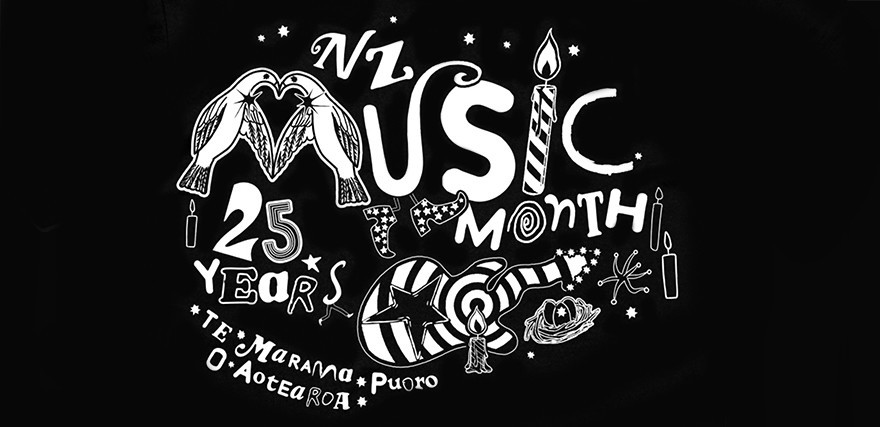
NZ Music Month 2025: 25 Years artwork by Lily Paris West.
New Zealand Music Month began in May 2001. In the years since it has been celebrated in a startlingly diverse range of ways, from mid-flight gigs to “Sexy Polynesian” cocktails.
The New Zealand Music Commission started the annual event. This organisation was launched in 2000 to help the growth of local music, both in a cultural and financial sense. The position of local music at the start of the previous decade had been rather dire. For example, in 1991 it was estimated that local music made up less than two percent of the airplay on commercial radio stations. NZ On Air was created in 1991 to address this issue, but progress was slow at first.
There still seemed to be a sense of “cultural cringe” when it came to local music, with some local listeners regarding it as an inferior form of overseas popular music. This initially led to the idea of having an annual celebration of New Zealand music, which would highlight the growing quality of local performers so that they gained a greater appreciation from both the general public and the media.
The first two New Zealand Music Week events ran in 1998 and 1999. The tide also began to turn with the arrival of top-selling acts such as The Feelers, Ché Fu, Fur Patrol, and Stellar* (to name just a few). The New Zealand Music Commission created New Zealand Music Month to keep building on the momentum and to ensure the country didn’t slide back into the bad old days of only listening to hits from overseas. Each year, the organisation works with others within the music industry and beyond to keep coming up with new ideas and keep the celebrations fresh, which has led to some unexpected approaches.
1. The New Zealand Music Month T-shirt
The T-shirt that accompanied New Zealand Music Month from the very beginning – and made available to the public to purchase from 2005 onward – has become such a recognisable clothing item that it’s easy to overlook what an oddity it is on the world stage. The standard design features only a striking circle design – with circles alternating from black to white as they increase in size, overlapped with one another. Music fans in New Zealand instantly associate the logo with the support of local music. It is hard to imagine a similar T-shirt being associated with Canadian music or American music.
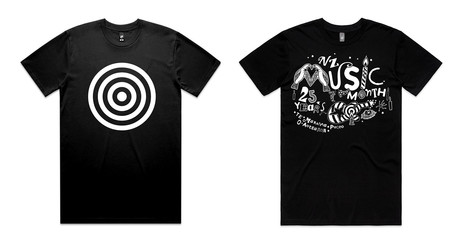
NZ Music Month classic logo T-shirt; at right, the 25th Anniversary edition designed by Lily Paris West.
The New Zealand Music Month logo does have some similarity to the British Royal Air Force roundel, which was appropriated by pop art and the mod music scene in the 1960s (a blue circle, with a smaller white then red circle within it). However in this case, the logo represents all types of New Zealand music, not just guitar bands. In fact, it was originally designed to reflect the shape of a CD, back in the days when they were at the centre of the music industry.
From 2007 to 2011, the T-shirts were so popular that they were stocked in Hallensteins, sometimes Glassons, and were sold as a standard item. However, this level of widespread reach could only last so long and these days the T-shirts are only printed in limited runs each year, often along with new bespoke T-shirt designs by music-focused graphic designers. The Music Commission has also run NZMM T-shirt design competitions in recent years, with the best entries being turned into shirts for sale, and in 2024 NZMM launched Tee Me Up with AS Colour – where the winning artist's design wins printed T-shirts for their own use.
2. Fat Freddy’s Drop on the Beehive steps
By 2002, it was clear that local music was continuing to gain ground. Local music now made up nearly 15% of the music being played on commercial stations across the country. The obvious next step was to also see how these successful acts could be helped to succeed overseas. A “World Series” event was held, which brought overseas tastemakers to New Zealand to watch a showcase of local acts. One of the attendees was a booker for the SummerStage festival in New York and he ended up programming a “New Zealand Sounds” section at the event the following year (including King Kapisi, Pine, Wai, and Greg Johnson).
Since 2001, the promoter Spacific had been bringing New Zealand artists over to perform special one-off gigs in the UK and Europe. In 2003, they extended their work to create a showcase event that took place in London and Amsterdam, which featured Nathan Haines, Fat Freddy’s Drop, Wai, Ebb, Concord Dawn, Trinity Roots and Stinky Jim.
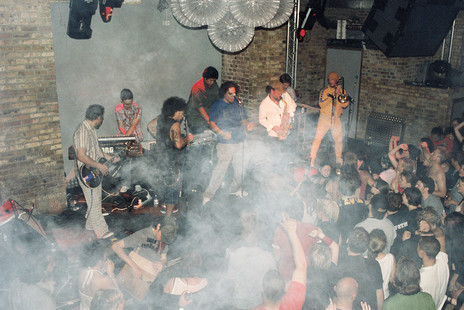
Fat Freddy’s Drop live at Spacific, Aotearoa showcase, Fabric, London: the first show of the band’s debut European tour 2003. P Digsss Guest MC on the mic. - Sarah Hunter
In order to make MPs aware of this overseas push, Fat Freddy’s Drop set up for a free New Zealand Music Month concert on the steps of the Beehive on Tuesday 20 May, 12.45pm-1.30pm. The message to policymakers was clear: we make great music here in Aotearoa, help us take it to the world.
This led to the Creating Heat Report being written by Malcolm Black, Hannah Cornwell, Adam Holt and Moana Maniapoto on behalf of the Music Industry Export Development Group which had been convened by the Government. Creating Heat laid out how the government could support the export of local music and this in turn led to the creation of NZ Music Commission’s Outward Sound program (in 2005).
3. Shihad in Aotea Square
On 1 May 2005 Shihad performed a free concert in Aotea Square, Auckland, to launch New Zealand Music Month. It was always going to be a popular event, but the crowd of 7000 people surpassed expectations. At 4.02pm, the band took the stage just as rain began pouring down. If anything, the downpour added to the excitement of the crowd. The rain eventually came to a sudden stop during one of Shihad’s heaviest songs. Afterwards, Cath Andersen from the New Zealand Music Commission suggested to the NZ Herald that Shihad launching into their heaviest song had “scared the rain away.”
4. The Sexy Polynesian Cocktail
An important aspect of New Zealand Music Month is the artist showcase series that runs alongside it. In the early years, these were largely aimed at radio programmers with the idea that having them see the artist perform would mean they were able to put a face to the name when their next single landed on their desk – and would therefore hopefully put them on their station’s playlist.
In 2006, an industry showcase was held across two venues behind K Road, Auckland. To encourage attendees to see as many acts as possible, they were able to get a free, specially concocted cocktail from sponsors if they arrived during the first song of an artist’s set. Each was named after the artist that was playing – for example, at the Concord Dawn show you could get a “Tall Dawn” which was a cocktail with Red Bull in it.
Mikhal Norriss was one of the organising team from the New Zealand Music Commission that year and later told RNZ, “Nesian Mystik decided to name their own cocktail. I had used some kind of play on the album name or something, but they just wanted it to be called ‘Sexy Polynesian’ so that people came to the bar and asked for a sexy Polynesian. Which was pretty awesome.”
All the efforts made to push local music began to bear fruit in 2006, when the amount of local music on commercial radio surpassed 20% for the first time.
5. Bands at BurgerFuel
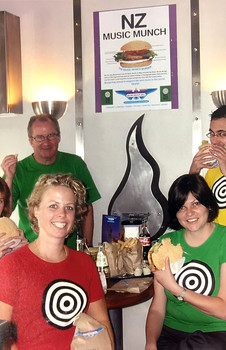
NZ Music Munch burgers: NZ On Air staff at BurgerFuel during NZ Music Month 2006. Clockwise from top left: Brendan Smyth, David Ridler, Nicky Donoghue, Camille Guzzwell.
One positive side effect of New Zealand Music Month is that it encourages businesses to incorporate local artists and their music within their publicity efforts during the month, resulting in both financial gain and publicity for the musicians involved.
In 2006, BurgerFuel booked a range of local acts to play at their stores. Often this meant cramming a PA and a band into the small space where diners usually ate their meals. BurgerFuel also created a “NZ Music Munch” burger to help publicise the campaign.
Playing in a crammed burger joint on a weeknight might have been an awkward endeavour but it provided a boost for the acts involved, which included indie country-rock band The Nudie Suits, who toured the BurgerFuel outlets across Auckland.
6. Ten Gigs in One Day
In 2010, Air New Zealand’s Grabaseat website had an ambitious plan for Opshop to perform 10 gigs in different cities across the country, all within one day. Two lucky prize winners got to fly along with the band. The campaign played on the name of the Opshop song ‘One Day’ and the fact that it was the 10-year anniversary of New Zealand Music Month.
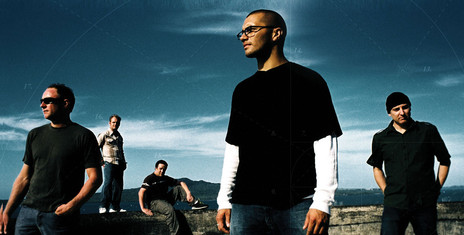
Opshop publicity shot from 2005 - Simon Grigg collection
The day started with a 6am show at Christchurch airport, then touched down not only in the other main centres, but also smaller towns in between such as Timaru, Hokitika, Gisborne, Nelson, and Whanganui. There was also a performance on the plane, timed to coincide with the plane flying over Aoraki Mt Cook.
The plan was nearly stymied when the plane collided with a small object, believed to be a bird, during the Napier-Gisborne flight. The band had intended to just play for 20 minutes in Gisborne to stay on schedule, but let the show go longer while aviation engineers hurriedly inspected the Q300 plane they were travelling on. Eventually, a new plane had to be sent to Gisborne to finish up the run and the Hamilton performance had to be postponed to a later date. The band made up for it by doing a second Gisborne show, hurriedly put together at the airport, where plenty of the local fans were happy to head out for a second set, followed by a late, but the same day, final performance in Auckland.
That same month, a follow-up Grabaseat competition had winners and day-trippers who had purchased tickets on a luxury round-trip event in Queenstown, with Dane Rumble on board the flight and the entertainment in the snowy south. The name of the promotion? Dane on a Plane, of course.
7. Beck’s Playable Posters
Another fun example of a company taking up the New Zealand Music Month spirit: the playable street posters rolled out in 2015 by Beck’s Beer. For a previous New Zealand Music Month, Beck’s released a run of beer bottles with label designs that each reflected a local band, with a download code for one of their songs, but this time they decided to take the music to the streets.
The posters were flat, like a standard poster, and used conductive ink to create areas that could be tapped to interact with it. Passers-by could tap one section to get a track playing and then remix it on the spot with a variety of controls.
8. Nook & Cranny Festival
By 2016, New Zealand Music Month had become such an institution that it was hard for organisations to find fresh ways to mark the occasion. However the staff at Dunedin City Library partnered with local songwriters in the Mentalist Collective and took their own unique approach by using every available space in the central library building to hold fun, surprising performances by more than 40 local acts. The result was the Nook and Cranny festival which had musicians performing in between the shelves, on the stairs, and every corner of the room.
NZ Music Commission chief executive Cath Andersen attended the event and found it delightful. “I called the lift and when the doors opened there was Robert Scott from The Bats playing a song!”
The festival continued in the years that followed and included this stripped back performance by Soaked Oats in 2017.
9. The Anthems TV Series
To mark New Zealand Music Month in 2019, Prime TV aired a special short-documentary series called Anthems: New Zealand’s Iconic Hits. There were five episodes, focusing on hits such as ‘Bliss’ by Th’ Dudes, ‘Melting Pot’ by When The Cat’s Away, ‘Don’t Dream It’s Over’ by Crowded House, ‘Why Does Love Do This To Me’ by The Exponents, ‘Royals’ by Lorde, ‘Sophie’ by Goodshirt, ‘Nobody Else’ by Rikki Morris, and ‘Trippin’ by Push Push.
10. Beyond The Beat
In more recent years, New Zealand Music Month has continued to inspire new projects that seek to highlight local music. A visually striking example is the From The Pit exhibition, which shows the best of the previous year’s work by music photographers.
In 2025, a new online series was launched which paired five rising acts with iconic songs by established artists including Kings, Drax Project, and Melodownz. The aim was to recreate the original in a whole new style. Each rising artist met with the songwriter whose track they were covering and went into the studio to create their own take with producer Mazbou Q. Viewers were able to appreciate the original song in a new light, while discovering a new talent in the process.
--